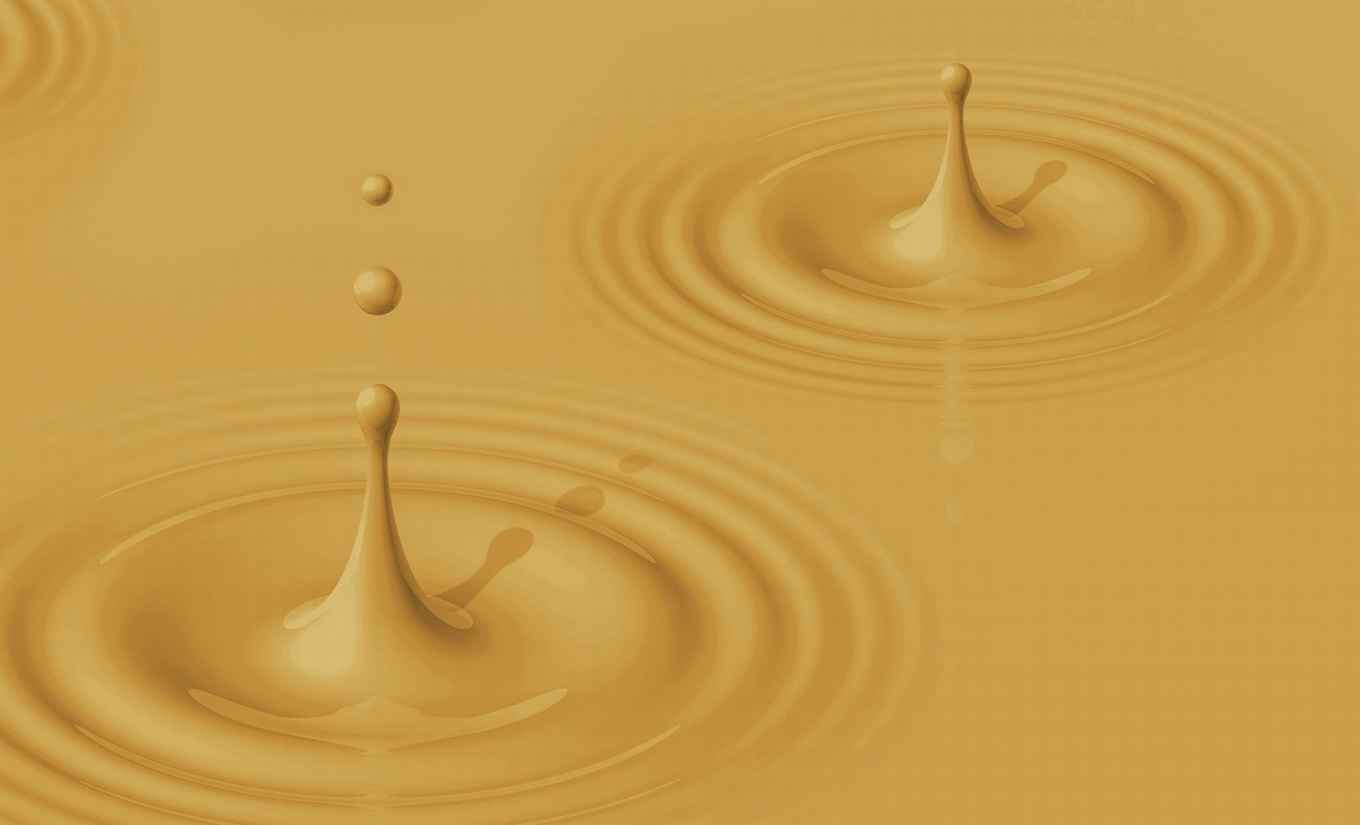Towers of liquid
5 March 2021

The effect of jet formation is not particular to coffee: the same effect can be seen for example when a rain drop hits a pond. When instead of coffee, a droplet of milk is dropped on a coffee surface, another interesting effect is observed: the tower of liquid will be mostly white. That is, it is not the coffee that splashes upward, it is the milk that ‘bounces back’.
Not just gravity
Cees van Rijn, lead author of the new publication, says: “A rough explanation for the jet forming effect has been known for a long time. When a droplet hits the liquid surface, the surface can obtain a temporary ‘impact crater’. Once the liquid has flown back to the center of this crater, it has nowhere to go but up, which is how the jet forms.”
However, despite more than a century of research, the precise details of the process were still unclear. In particular, understanding the varying speed with which the jet moves upward was a bit of an enigma. When the researchers investigated different liquids using laser light and rapid cameras, they found that just after formation, the speed in the jets slows down at an incredible rate. Van Rijn: “One might expect that the main reason the jet slows down is because of gravity pulling the liquid downward. However, we observed that just after formation, the deceleration can be five to even twenty times stronger than can be explained by gravity alone.”

Constructing a model
The researchers conjectured that the main factor responsible for this extreme slowing down was the surface tension of the liquid – the same type of tension that allows soap bubbles to form. The outer layer of liquid on the tower acts similarly to such a bubble, and its curvature forces the jet to slow down and eventually contract – much faster then one may have expected based on gravity alone. Van Rijn adds: “The effect is at its strongest when the jet is just formed. By the time the liquid has reached its highest point, the situation is essentially back to normal: the liquid falls back with at most twice the acceleration caused by gravity, and has lost its last bit of extra acceleration when the surface is reached again. The entire intricate process takes place in roughly a tenth of a second.”
With this explanation in mind, the physicists set out to create a mathematical model to describe the jet formation. The model made use of another surprising property of the jets: they always look roughly the same – the height and width of the jet vary over time, but other than that the shape does not change. This property of ‘self-similarity’ allowed the researchers to create a very precise model, which when compared with measurements on different liquids such as water, ethanol and a mixture of water and glycerol, very precisely matched all the observations.
Into space
The physicists are already thinking about the next step in their program – in fact, they are considering taking the experiments into space. Van Rijn: “It would be very nice to completely get rid of gravity and understand the role of surface tension alone. We would love to do our next set of experiments in the International Space Station to see what exactly happens in a gravity-free environment.”
Further information
Publication: C.J.M. van Rijn, J. Westerweel, B. van Brummen, A. Antkowiak and D. Bonn, Selfsimilar jet evolution after drop impact on a liquid surface, Physical Review Fluids 6 (2021) 034801.
Cees van Rijn was recently appointed as professor by special appointment of Microfluidics and Nanotechnology at the University of Amsterdam.
The publication was highlighted in Physics, the online magazine of the American Physical Society.